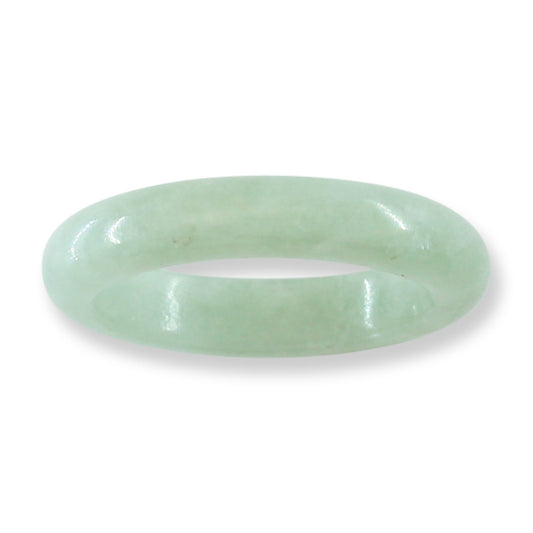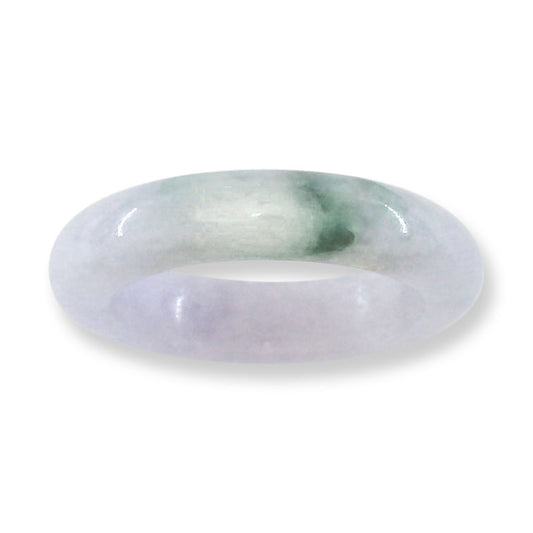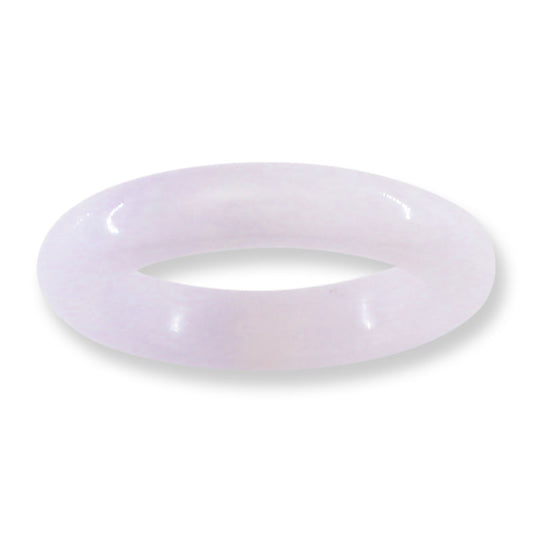Mason-Kay Colors of Jade Chart
Introduction
For millennia in China, the most prized color in nephrite jade has been white. The finest white nephrite, the best of which may be called “mutton fat” for its food-like texture, can command prices from tens of thousands to hundreds of thousands of dollars.
In this article, however, we’ll be focusing on jadeite jade, a distinctly different type of jade. In jadeite jade, the most valuable color is green.
Before we dive into color values, it’s worth noting that jadeite jade is also known by its traditional Chinese name, “Fei Cui.” When you send your jade to Mason-Kay for testing, our Jade Authenticity Reports now state:
“Internationally known as ‘Fei Cui,’ an umbrella term for pyroxene jades comprised primarily of jadeite, omphacite, kosmochlor, or any combination thereof.”
Jadeite Jade Colors in Order of Value https://masonkay.com/colors-jade

Jadeite Colors in Order of Value:
Green
Lavender
Ice
Black
Red
Yellow
White Grey
Does that mean all green jadeite jade is expensive?
Absolutely not. While green is the most highly valued hue in jadeite, not all green jade is expensive. The same applies to lavender jadeite.
Jade’s value is determined by more than just its color—it depends on the quality of that color and several other factors: translucence, texture, size, quality of cut, and, in the case of beads, matching.
Let’s take a closer look at color itself, one of jade’s most influential value factors.
Jade Value Factor: Color
We’ve already established that green is the most desired color of jadeite jade. But color is a complex and nuanced topic. For instance, it’s entirely possible for a red jadeite cabochon to be more valuable than a green one, depending on its quality. A jade stone is not valued solely based on what color it is, but rather the quality of it’s color.
Color evaluation in gemology is typically broken down into three main components: Hue, Saturation, and Tone.
Color is a very complex thing, as discussed at length by Richard Hughes presentation “Describing Color in Gems.”

Color Factor: Hue
Hue is defined as the color itself, but in gemology, we use “hue” to refer very specifically to its color. So instead of using more general terms like “green,” we may say “yellow-green” or “blue-green.”
Gemologists have to examine very subtle differences in hue to determine gemstone value. You may hear gemologists use terms like “overtones,” “undertones,” etc. for this reason. Gemstones are not like Pantone swatches, they’re not just one color - and their color appears differently in different lighting, and even depending on how the stone is cut and set. (Fun fact: Did you know that diamond color is actually graded with the diamond upside down? Diamond color can not be accurately evaluated by looking at the top of the stone, and not all diamond graders are qualified to grade color.)
Subtle nuances and differences in hue can make a major difference, not only in jade pricing, but in any colored gemstone. As a rule, in gemology, the truer the hue, the higher the value. This means that all other things being equal, a vivid, pure green stone will command a higher price than a bluish-green stone, and a pure yellow will be worth more than a greenish-yellow.
The one exception (in jade) is lavender jadeite jade (also called lilac jade by some Guatemalan jade sellers), which always falls into one of two categories: blue-lavender or pink-lavender. The trade has long debated which is more desirable, and market preferences can shift over time—there are no absolute rules when it comes to which shade wins out.

Color Factor: Saturation
Saturation describes the intensity or purity of a color—how strong or vivid it appears. At maximum saturation, a gemstone’s color can become so intense that it appears black. In jadeite jade and nephrite jade, black jade is actually highly saturated green jade.
Neither too much nor too little saturation is ideal when evaluating jade color, there is a middle ground where saturation is considered “ideal.” For jade to be considered “imperial,” it needs to have a deep, near-dark color - but not too dark. (This is surprisingly difficult to explain with words, so we recommend watching some videos to gain better clarity on this nuanced topic.)

Color Factor: Tone
Tone refers to how light or dark a gemstone appears, which affects the amount of gray present in the color.
Stones with too much gray look lifeless, while those with excellent tone appear vivid and full of life.
In jade, tone can dramatically influence beauty and value. A gemstone with excellent tone has just the right balance—neither too light nor too gray—allowing the color to come alive from within.
Summary of Color
You might think this explains why a natural green jadeite jade stone can be $50 and another natural green jadeite jade stone can be $50,000. Well, sort of. The quality of the color is only a small part of it. Let’s talk about some of the other value factors that can make a $10,000 difference or more in jade.
Note: The rules of quality and value which we’re discussing in this article apply only to natural, meaning untreated jadeite jade. Treated jadeite jade that has been dyed and/or polymer-impregnated, or even hollowed or backed, is not evaluated based on these conditions. In fact, a treated jade stone has very little value at all compared to its natural jade counterpart.
If you want to better understand natural vs treated jade (often called real vs fake jade, which isn’t necessarily accurate - as treated jade is technically still “real” jade), watch this video:
Jade Value Factor: Translucency
In gemology, translucency refers to how much light is able to pass through a gemstone. It’s what gives jade that inner glow or “life” that seems to come from within the stone itself.
Translucency can range from opaque (no light passes through) to semi-transparent (light passes through easily but the stone isn’t fully see-through) to transparent (as in the case of ice jade, where you can set the stone against a page in a book and essentially “read through” the stone.)
In many cases, two jadeite pieces may seem the same in color and size—but one can be worth thousands or even tens of thousands of dollars more simply because of its superior translucency.
This video features some examples:
Jade Value Factor: Texture
Texture is one of the most complex and misunderstood value factors in jade. The term is often used broadly in the trade to describe many different characteristics—visual, tactile, and structural—that together influence a jade’s overall appearance and quality. Because these characteristics are so interrelated and difficult to separate without precise vocabulary, sellers often default to saying that a piece simply has “good texture” or “poor texture.”
To discuss texture accurately, it helps to separate the factors that contribute to it—while remembering that each of these elements is interconnected.
Jade Texture Factor: Evenness of Color
When most people in the trade refer to “texture,” they are often describing the evenness of color or the presence of mottling and inclusions.
During formation, trace elements such as chromium can concentrate unevenly, creating areas of varying hue, tone, or saturation. These variations manifest as patches or streaks of color on the surface. Other mineral inclusions, such as albite or mica, may also appear as visible patterns within the stone.
While these color irregularities are technically color characteristics, not texture, the trade frequently lumps them together under “texture” because uneven coloration can make a piece look visually coarse or inconsistent.
The features seen in this image are actually crystal faces where light is reflecting off their flat surfaces. In gemology, we typically call this "salt" or "sugar." By nature of being able to see these crystal faces with the naked eye, these are considered "large" crystals (massive micro-crystals). This is present in some lower-quality jadeite jades, and typically only seen in the rough. Photo courtesy of Jewels of the Trade, featured in this video. 
Jade Texture Factor: Crystal Size
Jadeite jade is a polycrystalline aggregate, meaning it is composed of tightly intergrown crystals rather than a single continuous crystal like ruby or diamond. These jadeite crystals can range from microscopic to massive-microscopic—so in some specimens (usually of lower quality except in the case of “crystal inclusions”), individual crystals are visible to the unaided eye.
The smaller and more compact the crystal structure, the finer the texture. Finer-grained jade is tougher, more translucent, and capable of taking a superior polish. Coarser-grained jade, on the other hand, reflects light from the individual crystal faces, producing a granular appearance sometimes referred to as “sugary” or “salty.” Such material is considered poor texture.
Jeff Mason, G.G., of Mason-Kay Jade explains this extensively in his article with Roland Schluessel, FGA, in ICA’s Winter 2020 Issue of InColor which was also featured in Lotus Gemology’s Jade - A Gemologist’s Guide.
 Jade with a very good luster, meaning high quality material that has been finished well, will appear "wet" even when it's dry. Looking "wet" or "glassy" is indicative of good luster, as well as being able to see sharp reflections in the surface of the jade.
Jade with a very good luster, meaning high quality material that has been finished well, will appear "wet" even when it's dry. Looking "wet" or "glassy" is indicative of good luster, as well as being able to see sharp reflections in the surface of the jade.
Jade Texture Factor: Luster and Tactility
Luster refers to how light interacts with the surface of the jade, while tactility describes how it feels to the touch—yet both are closely tied to texture and the stone’s internal structure.
Because jadeite’s luster is determined by the compactness of its microstructure, finer-grained jade tends to exhibit a glassy luster, sometimes with a subtle greasy or oily quality. The finest jadeite has a smooth, almost soft feel in the hand.
By contrast, jade with coarser grains or a weathered surface can feel dry, even without visual cues. This “dryness” isn’t just a lack of polish—it’s a tangible quality resulting from the way light and oils interact with the surface. Jade that feels dry is almost always of inferior texture.
That being said, the expertise of the carving and the quality of the finish greatly impacts luster and tactility. I tried to warn you, this stuff is complicated. The complicated connection between finish, luster, and tactility may be better explained in-person by a master jade carver, as a simple blog article on the internet can not communicate the nuances of how jade actually feels in the hand.

Jade Value Factors: Size, Cut and Matching
All other factors (color, translucency, and texture) being equal - the difference in price between two stones comes down to:
Which one is bigger?
Which one is better cut?
And in the case of beads, which one’s beads match better?

Understanding Jade Value in Today’s Market
This blog article is not going to leave you confident in your ability to evaluate jade quality. In fact, it probably has the opposite effect.
The jade market is a living, breathing entity, constantly shifting with trends, availability, and collector demand. As the supply of fine-quality jade continues to decline, demand for exceptional pieces rises and falls in rhythm with the global economy, particularly the Chinese market, which remains the primary driver of jadeite value worldwide.
This dynamic nature makes jade one of the hardest gemstones to appraise. Even with formal gemological training and a sharp eye for quality, accurately pricing jade requires intimate, firsthand knowledge of the market—its cycles, preferences, and current trade realities within this $30+ billion industry.
If you’re wondering how much your jade is worth, we encourage you to consult Jeff Mason, G.G., of Mason-Kay Jade—widely regarded as the most respected jade expert in the United States.
Thanks to Jeff’s decades of expertise, Mason-Kay proudly offers jade testing and valuation services to both the public and the trade. Established in 1976, Mason-Kay remains the leading supplier of natural jadeite jade in the USA, serves as the primary sponsor of the International Jade Summit, and is a longstanding member of the American Gem Trade Association (AGTA), where Jeff Mason served on the board for many years.
When it comes to understanding jade, experience matters. Trust Mason-Kay to guide you with integrity and expertise.
Learn about our testing and valuing services here.
Click here if you have jade you would like to sell.
Check out these videos to see side-by-side pricing and comparisons of the different colors of jade:






